Venezuela wants a large part of its neighboring country Guyana. Venezuela and Guyana have sent troops to the borders. In addition, Brazil and the USA are mobilized in the region. Will Venezuela invade Guyana? Venezuela has already spread official maps where the Essequibo region is part of Venezuela, and they distribute Venezuelan IDs to people in that part of Guyana. Will Venezuela, with 350,000 troops, invade Guyana, with 8,000 troops?
The part of the world called Essequibo has been a matter of conflict since the early 1800s, when the British took over the Dutch colonies in the region. In 1814 the British established officially what was then called British Guyana, by incorporating the Dutch colonies settled from the early 1600s. Venezuela, however, claimed part of Guyana, as they claimed it was part of the Spanish colonial enterprise, of which Venezuela was a natural successor. Venezuela declared independence from Spain in 1811, and it was officially recognized in 1830. According to Venezuelans, it belonged to the Spanish colonial powers.
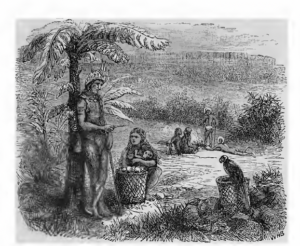
A complicated issue. Because how can one colonial power claim that some territory is actually theirs? One important thing is of course that such powers ignore the possibility that the indigenous populations would have title to the land. That kinda goes against the whole idea of extracting valuable resources from the land, a source of profit to the colonials. And there is a valuable resource: oil. Cop28 in Dubai has just confirmed that oilmoney talks. And Venezuela wants to have the oil, and therefore the land.
In the controversy over the land, languages used to play an important role. The language issue seems largely forgotten, however. Therefore here some background information.
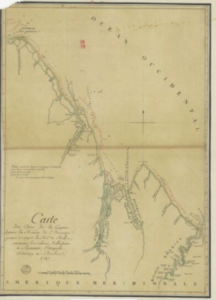
If Spanish speakers were in the area before the Brits, then Venezuela would have a point (still, within a colonial mindset). If English colonials were in the district, then the Brits would have a point. Also if the Spanish would have abandoned the region, or never really colonized it. The point is, there were neither Brits nor Spanish in Essequibo. There were first and foremost speakers of a range of indigenous languages in the region. In addition, there were speakers of Dutch creoles before and also after 1815, when the former Dutch plantation colonies were officially ceded to the British. And there were enslaved Africans on the Dutch plantations.
There is another complicating factor. The Treaty of Tordesillas. Columbus claimed his “discoveries” (discovered millennia earlier by other people) of 1492 for the Spanish crown. The Portuguese were the main colonizing power in Africa at the time, and they were on their way to Asia via Cape Horn. The two colonial powers agreed in 1494, that lands to the east of a vertical line west of Cape Verde would belong to Spain. And lands to the east of that line would be Portuguese. In South America, Portugal took what became Brazil, and Spain took almost all the rest. One area, however, was not colonized by either superpower, and that was the region known as “The Wild Coast”, the Guyanas. Other European powers did not respect this division, proposed by the Pope, especially after their conversion to Protestantism during the 1500s. The British, French and Dutch were active on the Wild Coast there from around 1600. Their activities resulted eventually in the establishment of the only three countries in South America that where neither Spanish nor Portuguese, at least as far as the official language is concerned. In French Guiana, French is the official language although French Creole is probably more widespread. In Dutch Guyana, or Suriname, Dutch became the official language, even though an English-lexifier creole Sranan is the lingua franca. In Guyana, formerly British Guyana (independent from 1975), English became the official language, even though Dutch creole languages were once major languages, especially in the interior.

Creole languages in the Caribbean are often associated with populations of African descent, and it is assumed that these languages are spoken by descendants of slaves. In (British) Guyana it is different. At least from the beginning of the 18th century, the populations associated with creole languages were the indigenous populations, or mixed groups (African-indigenous, sometimes also mixed with European). There are two theories about this indigenous use of creole: the creole languages started off as languages of the enslaved, and from there spread to the indigenous groups. The other idea is that the creoles started as trade pidgin between Africans and Amerindians, and creolized among the Amerindians. There are problems with both theories, which I won’t go into here. The important thing is that some form of Dutch was the main (colonial) language of Essequibo, and that the indigenous populations used it for external contacts.
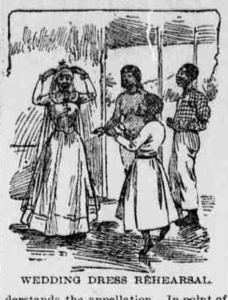
And one other thing is important. Whereas maroons (escaped slaves) played an important role in other societies, especially in contact with indigenous populations, this was hardly the case in Guyana: the Dutch colonials had allied themselves with the Lokonos, an important indigenous population. The Lokonos would kill or return any maroons back to the colonies. There are and were no maroon societies of any significance in Guyana. OK, some sources mention thousands of maroons, but the primary documents are lacking.
This background knowledge is necessary to understand how languages played a role in the conflict between Venezuela and Guyana, which now has lingered on for two centuries. Venezuela still wants to have the part of Guyana west of the Essequibo river, probably both riverbanks. How does the former use of languages affect the land claims?
“As a result of the constant intercourse between the Dutch and the Indians, the native Indians became in course of time, entirely incorporated in the Dutch colonies, and there sprung up a language known as Creole Dutch …” In: Summary of Boundary Proceedings: “Relations with Indian Tribes”.
In 1983 the Guyanese linguist Ian Robertson wrote an article, now largely forgotten, about exactly this, in a journal about the Caribbean and South America, published in the Netherlands, discussing the issue.
In his article, he described how data on the heritage of Dutch Creole and Spanish played a role. Dutch as the language of the local power usurped by the British, ceded legally from the Zealanders to the British in 1815. The use of Dutch (Creole) would favour Guyana. Spanish would favour Venezuela.
The following types of linguistic data would be used in the argumentation, favouring a Spanish or a British colonial power:
- The use of Spanish by the indigenous populations of the region
- Borrowing from Spanish in the indigenous languages of the region
- The use of Dutch by the indigenous populations of the region, which would favor the Brits.
- Borrowing from Dutch in the indigenous languages of the region, which would also favor the Brits.
The loanword argument would manifest itself, according to Robertson, in:
- The absolute quantities of such borrowing
- The chronology of such borrowings (which ones are older?)
- The extent to which they affect the core of the indigenous languages
- The extent to which earlier loans could have been supplanted by later loans.
In addition, the use of Creole Dutch by indigenous groups plays an obvious role as well, as this reflects former power relations, and a certain recognition of Dutch dominance in the region. Robertson’s objective overview of the data leaves no doubt. The Spanish had no presence in the area.
What kind of loanwords can one find in the indigenous languages? Robertson counted 83 borrowings from Dutch or Spanish in the Arawak language of Guyana. 53 from Dutch, 30 from Spanish. Spanish dominated in the realm of animals (cattle, donkey, dog, pig, chicken, goat, horse; all of them domesticated European animals), but Dutch shows more loans in the areas of utensils, buildings and administration etc.
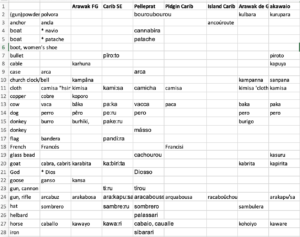
Robertson also points to the presence of Dutch loans in other indigenous languages, such as Akawaio/Kapong and Arekuna, both of them Cariban languages, and spoken in Brazil, Guyana and Venezuela. The main indigenous language groupings in the region are Arawakan, Cariban and the Warao isolate.
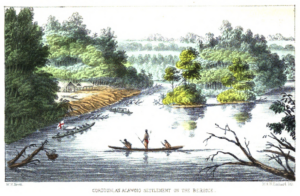
Finally, Robertson went through historical records where observers such as travelers, administrators and missionaries made remarks on their use of Creole Dutch with indigenous populations. Also on that basis, it was clear that the Spanish language, and hence the Spanish people, had played no role at all in the Essequibo region. On the other hand, it was also clear that the Creole Dutch language played a major role in meetings between colonial Brits and local indigenous populations. He concluded that the use of Creole Dutch was widespread, it was the second language of many indigenous groups, spoken beyond their native languages and it was the normal language used in contacts with Europeans. Many chiefs spoke the language. In his article, he quotes dozens of quotes from contemporary observers mentioning the creole, and several different indigenous groups were involved. Some quotes could be found in the documentation of one of several commissions investigating the boundary issue over time, but Robertson had found several more, all indicating the dominance of Dutch in Essequibo and the almost complete absence of Spanish.
However, as for Spanish, one more thing should be mentioned. If one looks at the naming of introduced items in Spanish in the indigenous languages of South America, such as (iron) needles, planks and horses, it appears that Spanish borrowings strangely enough only dominate in the region where Spanish never played a major role, namely the Caribbean and the Guyanas. One found much fewer Spanish loans in Spanish America, where Spanish (or Portuguese) is dominant. This claim is based on data from around 1900; the situation today is of course quite different, with massive influence from Spanish. The presence of Spanish loans in Guyanese Arawak in fact does not mean a lot. Almost the same number of Spanish loans can be found in the Kalina language (Cariban) spoken in French Guyana (between 30 and 40), where Spanish colonials had played no role at all.
Many of the Spanish loans are also found in early sources of Island Carib, a mixture of Carib and Arawak. It is possible that the Spanish words spread from the Caribbean islands to the Guyanas, and that they spread from one indigenous group to another. In fact, there are also a number of equally widespread words of Dutch origin.
Dutch loanwords going back to the earliest colonial period in he 1500s include words for mirror, scissors, fire-arm (haakbus), sword, sugar and footwear (stievel), which entered several indigenous languages of the Circum-Caribbean region (this is not mentioned by Robertson, but based on my own research).
In any case, Robertson is not in doubt. All the evidence points to the dominance of Dutch Creole in the Essequibo district of Guyana, and thus it is a powerful argument against the imperialist claims of the Venezuelans. The presence of Spanish colonials in Essequibo in the historical records is close to absent.
Will this evidence stop the expansion plans of the Venezuelans? It is good to be an optimist. I hope that this information saves the lives of innocent civilians and soldiers.
Read more:
Robertson, Ian E. (1977): Dutch creole languages in Guayana. Boletín de Estudios Latinoamericanos y del Caribe, Diciembre de 1977, No. 23 (Diciembre de 1977), pp. 61-67.
Robertson, Ian E. (1983): “The Dutch linguistic legacy and the Guyana/Venezuela border question”. Boletín de Estudios Latinoamericanos y del Caribe. 34: 75–97.
Peter Bakker studies historical sources of the creole languages of the world, in order to understand their genesis. He has published on creoles with Chinook, Dutch, English, French, Sign Language, Spanish and Malay as lexifiers. He also works on general properties of creole languages. He did fieldwork on a.o. Saramaccan of Suriname, Oku Marabu of Gambia and Lesser Antilles Creole French of Saint Lucia.

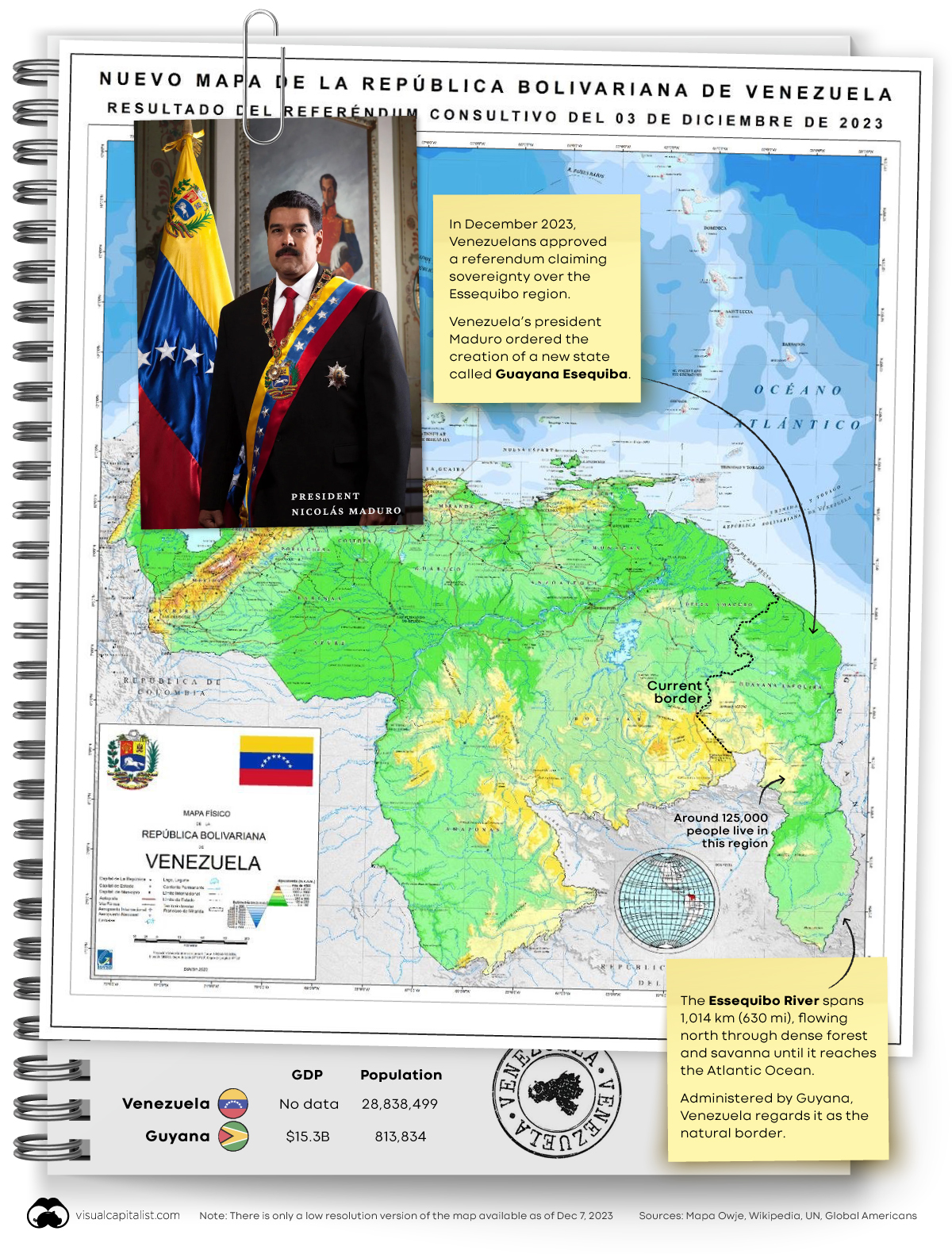





See also an earlier contribution:
https://www.lingoblog.dk/en/the-role-of-extinct-languages-in-the-venezuela-guyana-conflict/